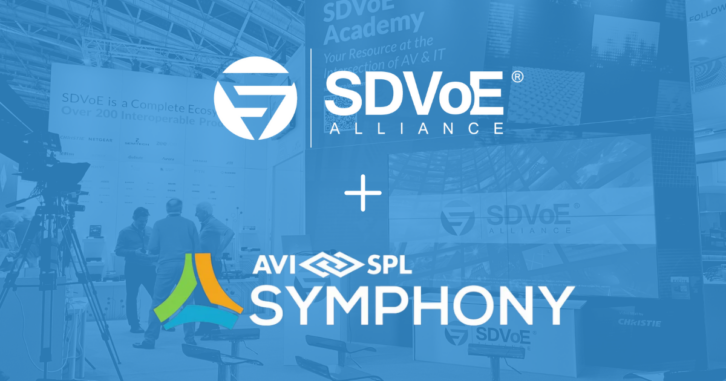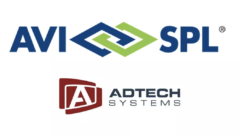
The SDVoE Alliance, a nonprofit consortium of technology providers collaborating to standardize the adoption of Ethernet to transport AV signals in professional AV environments, announces integration with AVI-SPL Symphony, an award-winning user experience management platform to administer, monitor, control and analyze multi-vendor AV, UC, and spaces across environments.
The SDVoE API expands Symphony’s view into the full technology deployment of customers. Industry professionals can control and manage SDVoE devices alongside other system devices, such as sources, displays, lighting, shades and other components via Symphony. As a result, collaboration spaces increase uptime, users adoption strengthens, and technical resources decrease time to resolution and root cause analysis.
“The SDVoE API was designed as a flexible yet simple software platform to empower the rapid development of highly specialized software, custom-tailored to the needs of a vast array of end users,” said Justin Kennington, president of the SDVoE Alliance. “Our goal in designing the SDVoE API was to create a solution that would work in parallel with other management platforms, like Symphony. Together, with AVI-SPL, we are pleased to introduce integration with AVI-SPL Symphony to streamline and enhance workflows for managing a myriad of devices in collaboration spaces.”
“Symphony’s purpose is to minimize the struggles of end users and IT staff as they leverage and deploy technology. We want technology to work for us, not against us,” says Laurie Berg, vice president of Symphony Product Operations. “Working with organizations, like SDVoE, enables Symphony a broader portfolio of devices to centrally monitor, more guided and detailed incident management, increased implementation of workplace standards, and strategic analysis for future decisions. End users have an optimal experience and IT resources have peace of mind”
The SDVoE API allows manufacturers, developers, and system integrators to exercise their creativity to reimagine traditional AV use cases and invent new ones yet to be conceived or even possible without the SDVoE platform. SDVoE’s API connects directly to the cloud to enable remote management and monitoring in a modern and IT-friendly fashion. Operators can monitor the performance of their SDVoE technology remotely to reduce downtime and control complex tasks. SDVoE’s API supports complex programming tasks for various applications, such as video walls, instant-switching, and multiview, without the extra cost, downtime, and hardware. With the SDVoE API, technology professionals can access those tasks via the Symphony platform, while also having visibility into their entire collaboration estate.
For more information on the SDVoE Alliance, please visit www.sdvoe.org. Keep up with the latest news from the SDVoE Alliance on LinkedIn, Twitter and YouTube.
About the SDVoE Alliance
SDVoE is an initialism for “Software Defined Video over Ethernet”. The SDVoE Alliance is a nonprofit consortium of technology providers collaborating to standardize the adoption of Ethernet to transport AV signals in professional AV environments and to create an ecosystem around SDVoE technology allowing software to define AV applications. The alliance operates the free SDVoE Academy training platform, participates in tradeshows and conferences, publishes white papers and case studies, and promotes SDVoE technology, and solutions based on the technology, to system integrators, designers, consultants, and end users. SDVoE Alliance founding members bring different perspectives to the SDVoE initiative spanning the entire ecosystem with expertise in chipsets (Semtech, Aquantia), switches and storage (NETGEAR), and AV end points (Christie Digital, Sony and ZeeVee).. For more information, visit sdvoe.org. Connect with SDVoE on Twitter @SDVoE, LinkedIn, and the SDVoE blog.









